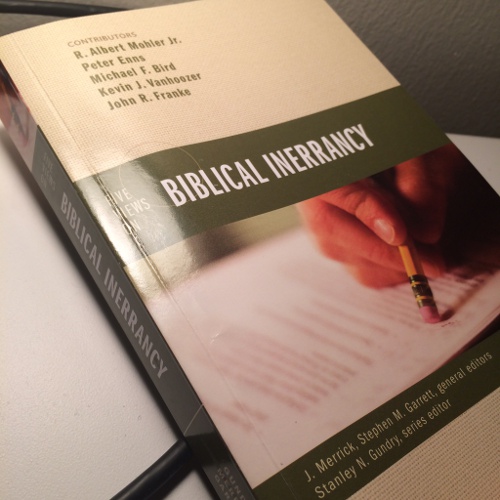The Story of Acts
This year our church is trying something a bit adventurous for our annual Easter drama. Instead of ending the Easter story with the resurrection and ascension of Jesus, we’re telling the story of what happens next: how the Gospel of what Jesus did went out into the world, as told in the book of Acts.
Much happens in Acts, and if you’re not familiar with the big picture, it can seem like it’s just one thing after another. But there are important themes you can trace that can help keep you oriented through the amazing events that happened in the first century of the life of the church.
The Key
Perhaps the best launching point is found in verse 8 of chapter 1:
“But you will receive power when the Holy Spirit has come upon you, and you will be my witnesses in Jerusalem and in all Judea and Samaria, and to the end of the earth.”
Jesus begins with the catalyst of the book: The Holy Spirit. He explodes onto the scene right at the beginning, and His work is what drives everything that comes after. When Jews from around the world come back for the feast of Pentecost, He shows up and empowers the apostles to share the Good News about Jesus in different languages. Later on, He will duplicate the miracles Jesus performed, like healings and resurrections. But just as powerfully, He will transform the lives of people you might least expect.
Jesus also explained where the message would go, and this marks the big divisions in the story.
In Jerusalem
They begin in Jerusalem, preaching to the very people who had just crucified Jesus. They win thousands of converts, but there is growing animosity with the existing religious leaders. Just as they opposed Jesus, so they would oppose His followers.
The first clash begins with a warning, after the apostles healed a lame man. Then it escalates to a beating, after the apostles have gained enough followers to make the Pharisees jealous. Finally, some Jews take on a prominent Christian named Stephen, but they cannot best him in debate, so they bring false charges against him, resulting in his execution. In his life and his death, he is a picture of Jesus, and his murder is the first turning point in the story.
In All Judea and Samaria
A great persecution breaks out, which pushes Christians out into Judea and Samaria, the surrounding regions. There Philip shares the Gospel with Samaritans—famously hated as unfaithful half-Jews—and a God-fearing Ethiopian. Just as Jesus preached that you cannot serve both God and money, so the apostles strongly warn a converted magician that the power of God cannot be bought.
The second great turning point is something like an inverted picture of the first. Stephen, the one you would expect to do great things is murdered at the end of part 1, and one of the people involved in his death is converted at the end of part 2. Paul, a zealous Pharisee who has been pursuing Christians into other regions, is confronted by a vision of Jesus and stricken blind. He is humbled and comes to faith and repentance. Around the same time, God gives Peter a vision making it clear that the Gospel is not just good news for Jews. This Jewish Messiah offers salvation to Gentiles, too.
And to the End of the Earth
The rest of the story is how Paul risks everything to tell others about Jesus, eventually embarking on multiple missionary journeys around the Mediterranean to make converts in one city after another. He is beaten and even stoned as Stephen was, but God spared his life so that he could continue spreading the message. The final arc of the book is when Paul returns to Jerusalem, accidentally stirs up trouble, and appeals to Caesar, resulting in his journey to Rome itself. The book closes while he waits for an audience with Caesar himself.
Sermons and Testimonies
One unique feature of the book is that it is punctuated by over a dozen speeches. Half of them are Gospel presentations made to one crowd or another. The other half are testimonies given, sometimes in courtroom situations. The Gospel speeches are masterful examples of connecting what is happening in the moment to what Jesus did. Among Jews, there is often a connection to Old Testament prophecy. Among Gentiles, there is often a connection to Jesus as Creator and Judge. It provides many models for contextualizing and making Gospel connections.
Rising Action
In some ways, Acts is a story of rising action. There is conflict here and there—a sad death, opposition, violence, mobs. And yet nothing threatens to stop or slow down the Spirit’s work and the Gospel’s advance. It continues to move upward and outward in hope. In that sense, it has a very different vibe from our typical Easter performances, which reach a great crescendo in the horrible crucifixion and triumphant resurrection. It’s almost a long epilogue—and yet that is the story of Acts, the story of the New Testament, and the story that we continue to live in today.
If you’re reading this, then you’re in this story. If you aren’t a Christian, you are among the many invited to repent and believe. There is no qualification to meet except to recognize that Jesus died and rose again according to the Scriptures, and that one day He is coming back to make all things new, and to judge the living and the dead. The invitation for you and for your children, for those near and far off, for the Jew, the Gentile, the slave, the free, the eunuch, the widow, the rich, the poor.
